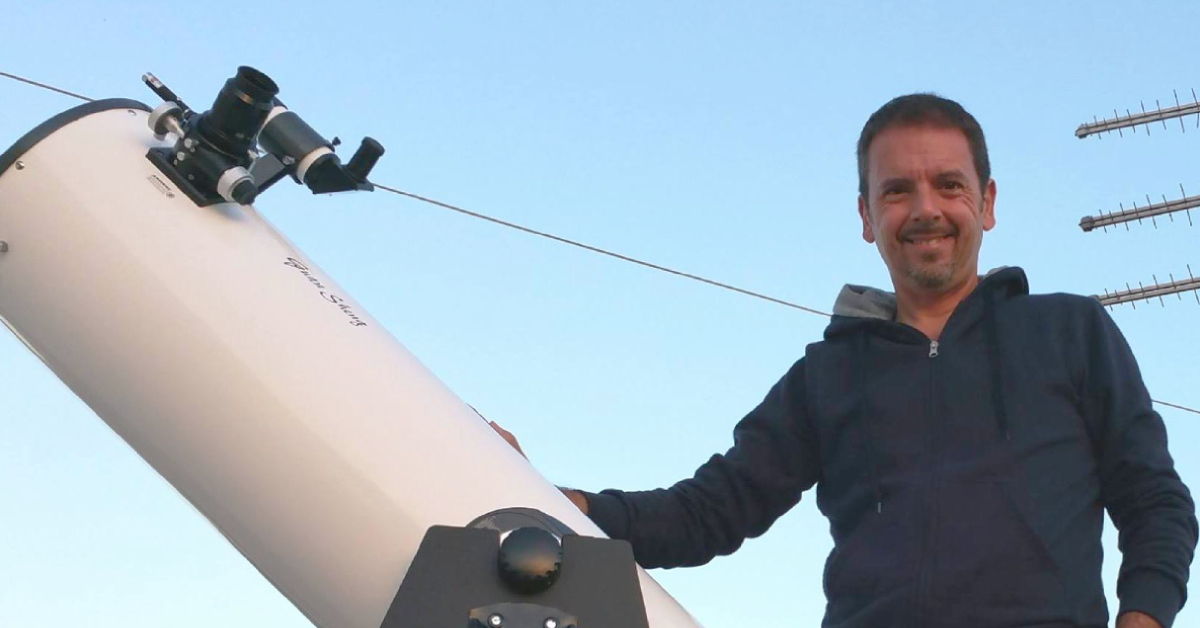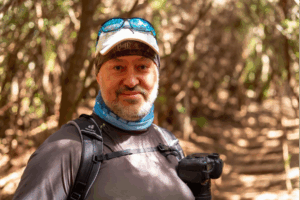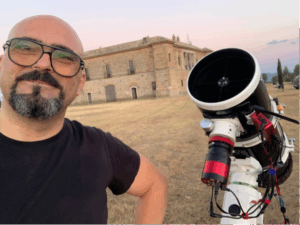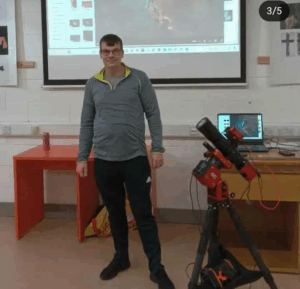
ASIWEEK #29/2025 Winner – Interview with Marzena Rogozińska
INTRODUCTION My name is Marzena Rogozińska. I live in Bytom (Poland) and work as a psychologist and pedagogue at two schools. I would like to thank you for honoring my

Tommaso Massimo Stella is the winner of ZWO 2020 ASIWEEK #10 and has brought us many extraordinary astronomy photos. To make our ZWOers know this excellent astrophotographer better, we make this interview. Let’s all take a look now.
Hi, my name is Tommaso, Massimo Stella. I am 50 years old, I live in Taranto (Italy) near the sea.
My passions are computer science (which is also my job), astrophotography and motorsport.
Direct contact with nature regenerates me 😉

I always loved astronomy, since I was a child because it makes me dream of places without limits of space and time. Used my first spotting scope to observe the moon when I was 8 years old but first real telescope was a dobson 250/1250 without any automation that allowed me to get to know the starry sky better. I will hardly forget the first time I saw Saturn in that tube at 300x.
Started my journey with planetary astrophotography in 2017 and then I continued with deepsky admiring the images made by some friends.


http://www.commodore64.it/public/Q2b.jpg
I used several telescopes to photograph but the one I use now is a 102mm FPL53 triplet refractor on Skywatcher AZEQ6 GT mount. The cameras are: ZWO ASI 294mc pro and ZWO ASI 224mc. The 224 was my first astrophotography school and allowed me to take many photos with the short exposure technique.

http://www.commodore64.it/public/Q3.jpg
The photo of M78 was born by chance. I thought I had little time available to integrate so I chose a subject that seemed easy to me.
Instead, after 5 hours of exposure, I realized that the H-alpha signal around the reflection nebula is very weak so I spent another night to improve the final result.
Processing was also not easy because it requires a sort of HDR approach.


http://www.commodore64.it/public/Q4.jpg
My advice is to leave very little to random actions. Astrophotography requires passion but also study, dedication and application.
It is important to be scrupulous during the acquisition (always check that you have the best mechanical performance) and to know the post processing tools very well.

The Ghosts Of Cassiopeia – APOD NASA 25 October 2019 – 13.5h – Apo Triplet 107@f/5.5
http://www.commodore64.it/public/Q5a.jpg

The Soul Nebula – 9,75h – Apo Doublet 72@f/6
http://www.commodore64.it/public/Q5b.jpg
Yes, the Horse Head region with its colors and its different nebulae. This is the short exposures version: 482×30 seconds (4h total) with Newton 200 f/4

http://www.commodore64.it/public/Q6.jpg
Unfortunately I live in an urban area with Bortle 8 sky so to do astrophotography I move at least 40km to a place with Bortle 5 sky.
Three or four times a year I go to the mountains to look for 2/3 Bortle skies

http://www.commodore64.it/public/Q7.jpg
Being a traveling astrophotographer, I believe that the most difficult part is that related to the acquisition which includes the planning of the shooting, the preparation of the tools, the stationing, and the search for perfection during the entire exposure time trying to avoid events that make you lose quality.
My first ASI camera was the 120mc. Bought to start photographing the Moon and planets, it has given me many satisfactions, even in deepsky with the technique of short exposures.
Then I went to ASI 224mc, an excellent camera that I still use for autoguiding and for the planetarium. For deepsky I use the SI 294mc pro.
I discovered the ASI in the various amateur astronomy forums and, once tried, I was satisfied so I placed trust in ZWO
I’d like an APS-C sensor camera with quantum efficiency greater than 071 and a better cooling system
I think ZWO has the merit of being the fastest to understand that the amateur cmos astronomical camera market would have been the driving force.
ZWO has designed and manufactured good products with excellent software support.
Cooling system should be improved to avoid condensation and ice in any conditions.
This is my first real deepsky photography. I have used the ASI 120mc with short exposures (400×20 seconds) and the newton 250 f/5. Not so good, I was a beginner. 😉

http://www.commodore64.it/public/Q12a.jpg

The Heart nebula – 10h – Apo doublet 72@f/6
http://www.commodore64.it/public/Q12b.jpg

Phantom of the Opera nebula – 8.25h – Apo Triplet 102@f/7

INTRODUCTION My name is Marzena Rogozińska. I live in Bytom (Poland) and work as a psychologist and pedagogue at two schools. I would like to thank you for honoring my

Two years after winning #44/2023, Robert Eder, a sound engineer from Vienna, Austria, has once again claimed victory with #27/2025 ASIWEEK, returning to share his astrophotography journey. Combining technical skill

—— “Even though astrophotography is often considered a ‘solitary’passion, it is in fact very social when others help you through the toughest moments.” Hello, my name is Paweł Radomski, I

“I can say that it all started from there.” Giacomo’s connection with astronomy began early. “I’ve always been passionate about the sky since I was a child,” he recalls. At

My journey into astrophotography began in 2020, during a time when I wasn’t very confident with computers. I remember joining online astrophotography communities, full of hope and questions—but instead of